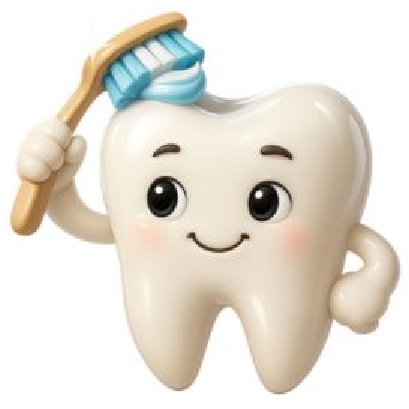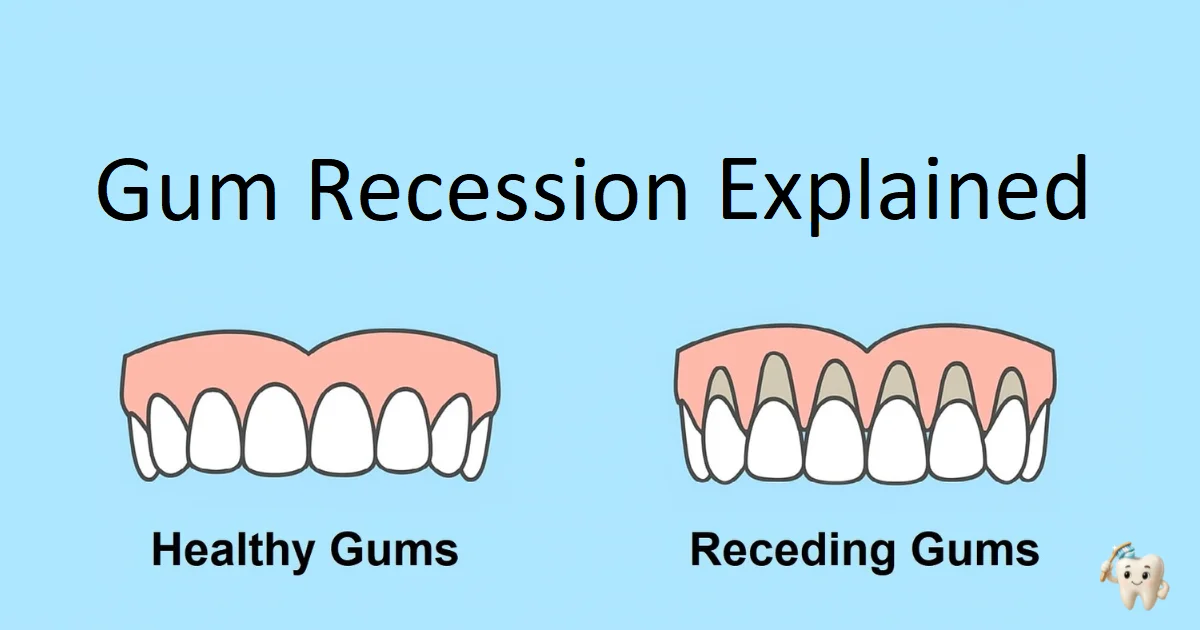Receding gums can sneak up on you, often going unnoticed until you start seeing longer teeth or feel increased sensitivity. Gum recession isn’t just an age-related issue — it can happen at any stage of life and is usually a sign that your gums are under stress. Understanding what causes receding gum lines and how to stop it early is key to protecting your smile and preventing further damage.
What Is Gum Recession?
Gum recession (also known as Gingival Recession) occurs when the gum tissue surrounding your teeth pulls back or wears away, exposing more of the tooth or even its root. This can lead to tooth sensitivity, increased risk of decay, and even tooth loss if not managed. For a more in depth explanation of gum recession follow here.
When the gums recede, pockets can form between the teeth and gum line, allowing bacteria to accumulate. This not only worsens the recession but can also lead to serious infections or bone loss if untreated.
Common Causes of Receding Gums
- Overbrushing: Brushing too hard or with a stiff-bristled brush can wear away gum tissue over time.
- Poor Oral Hygiene: Plaque buildup hardens into tartar, leading to gum irritation and recession.
- Gum Disease: Gingivitis and periodontitis are leading causes of gum loss.
- Smoking: Tobacco use interferes with gum tissue healing and circulation.
- Teeth Grinding: Clenching or grinding puts excessive pressure on the gums.
- Misaligned Teeth: Uneven pressure from bite issues can cause gum wear.
- Hormonal Changes: Hormonal shifts during pregnancy or menopause can make gums more sensitive and vulnerable to recession.
- Genetics: Some people are genetically more prone to thinner gum tissue and recession.
How to Stop Receding Gums Early
Use a Soft-Bristled Toothbrush
Switch to a soft or ultra-soft toothbrush and use gentle, circular motions. Avoid aggressive scrubbing, which can erode gum tissue. Consider using an electric toothbrush with a pressure sensor to avoid overbrushing.
Maintain a Consistent Oral Hygiene Routine
Brush twice daily with fluoride toothpaste, floss daily, and use a gentle mouthwash designed for gum health. Removing plaque before it hardens into tartar is key.
Once the Plaque has developed into Tartar, no amount of scrubbing will remove it, and unfortunately, that leaves the option of another expensive trip to the Hygienist, or buying a recently introduced product, The Ultrasonic Teeth Cleaner, and I have done a section on that.
Address Underlying Gum Disease
If you have signs of gingivitis or bleeding gums, visit a dentist or hygienist promptly. Early treatment can stop further gum loss. Deep cleaning treatments like scaling and root planing can remove bacteria and plaque from beneath the gumline.
Wear a Mouthguard if You Grind Your Teeth
Night time grinding can wreak havoc on gums. A custom mouthguard helps distribute pressure evenly and prevents further damage to the gum line.
Quit Smoking
Smoking impairs blood flow to the gums, making it harder for tissue to heal. Quitting gives your gums a fighting chance and significantly lowers your risk of gum disease progression.
See a Dental Professional Regularly
Although we are pro active in reducing dentists visits, sometimes it becomes a must. In cases of advanced recession, your dentist may recommend surgical procedures such as gum grafts to restore lost tissue. Routine checkups also help catch early signs of trouble and keep recession under control.
Preventing Gum Recession from Getting Worse
Even if your gums have already receded slightly, you can stop things from getting worse. Stick to a gentle oral hygiene routine, use the right tools, and see your dentist regularly for cleanings and assessments. Avoid acidic foods and sugary snacks that can aggravate your gums and increase bacterial buildup.
Supportive Habits That Protect Your Gums
Good overall health supports gum health too. Drink plenty of water to keep your mouth hydrated, get enough vitamin C and calcium, and manage stress — high stress levels are linked with teeth grinding and gum inflammation. Understanding what causes receding gums and how to stop it early is paramount to good oral health.
Personnal Experience
As a 13 year old lad being involved in a minor accident, and losing one of my front teeth, I was left disfigured with misaligned teeth after undergoing, what was at the time, pioneering orthodontic surgery.
The ribbing I took at school left me with no motivation or incentive to look after my smile.
Gum resession led to gum desease, and ultmately, loss of all of my teeth in a very short period of time, and back then, I really couldn’t care less. Massive error in judgement on my behalf as the consequences are huge.
I live in the knowledge that the onset of early symptoms of receding gums, to loss of all my teeth happened at an alarming rate and I don’t want to see it happening to anyone else.
I hope that the information and tips on my website makes the likes of my experience a thing of the past
Frequently Asked Questions
Q: What’s the first sign of receding gums?
A: You might notice longer-looking teeth, sensitivity to hot or cold, or notches near the gumline.
Q: Can receding gums grow back naturally?
A: Unfortunately, no. Once gum tissue is lost, it doesn’t regenerate naturally — but further loss can be prevented with proper care.
Q: Is gum recession painful?
A: Not always. Many people don’t feel pain until the roots are exposed or sensitivity sets in.
Q: Can dental treatment fix gum recession?
A: Yes. Treatments like scaling, root planing, or gum grafts can help manage or repair recession in more advanced cases.
For More Information, See My Posts The Importance of Dental Hygiene and Sensitive Gums Treatment

